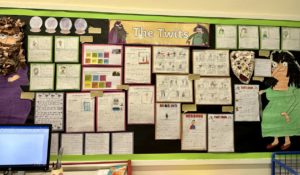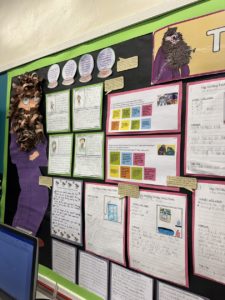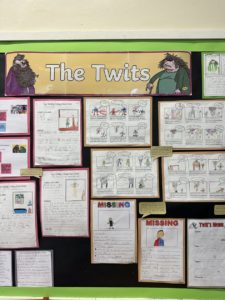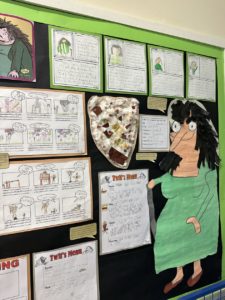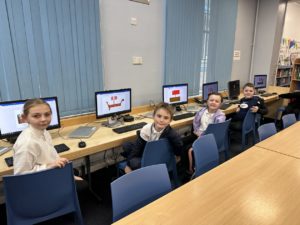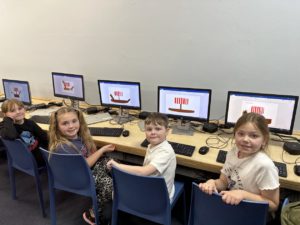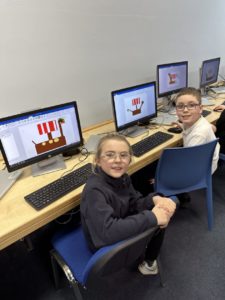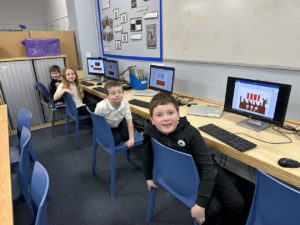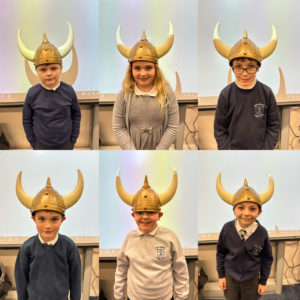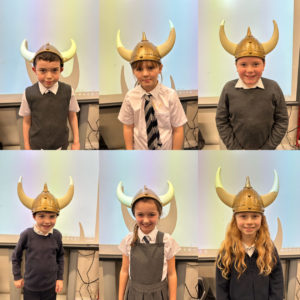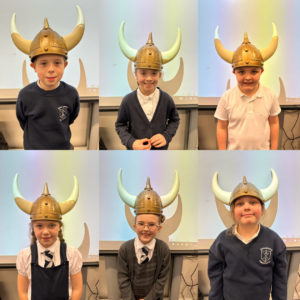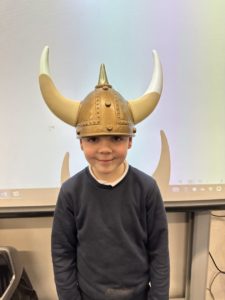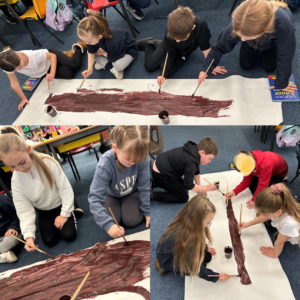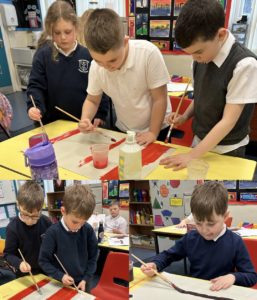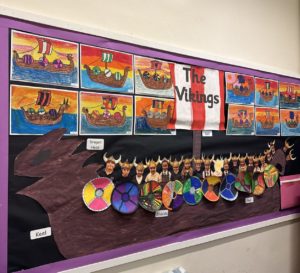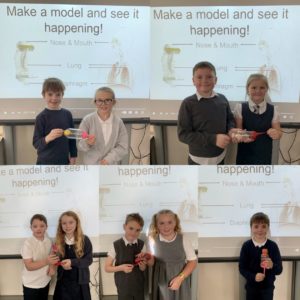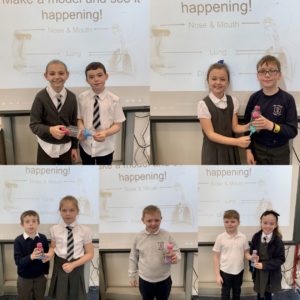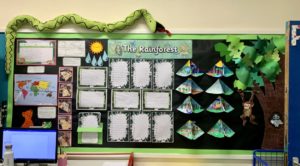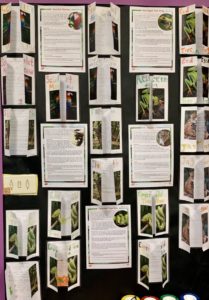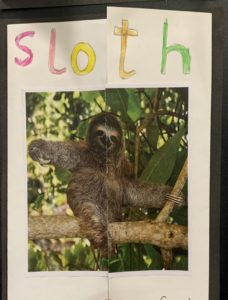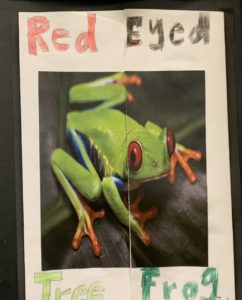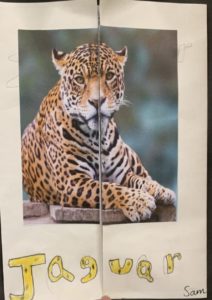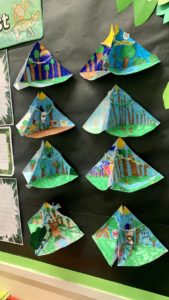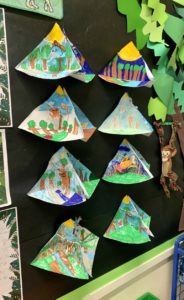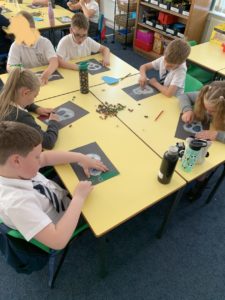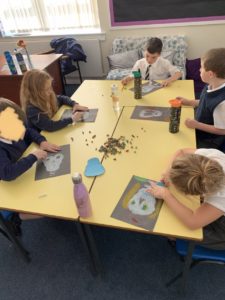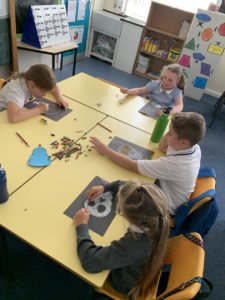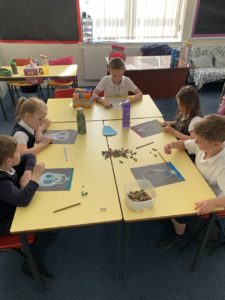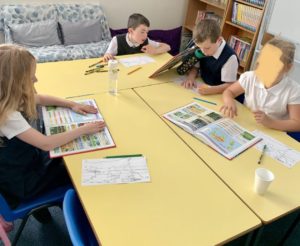Last term our class novel was The Twits. For those of you who don’t know, The Twits is written by Roald Dahl and features Mr. and Mrs. Twit, a spiteful, lazy unkempt couple who continuously play nasty jokes on each other to amuse themselves, and exercise their wickedness on their monkeys.
We absolutely loved reading the novel and enjoyed using jam boards at the end of each lesson to record our predictions for the following week. We were always very eager to read on to find out what was going to happen as the story developed and enjoyed leaving the story on a cliff hanger each week.
We used Literacy, ICT, Drama and Art and Design to link our learning with the Twits. We wrote poems, instructions, comic strips, menus and more. We used materials to recreate Mr Twit’s disgusting beard and we used our drama skills to reenact parts of the story. At the end of the novel we worked in teams to complete a Twits quiz. Each team scored very highly.
We are looking forward to reading another Roald Dahl novel this term. 📚❤️
